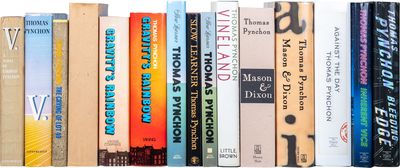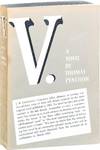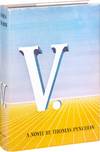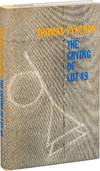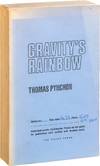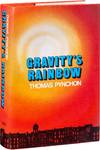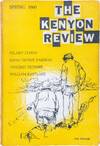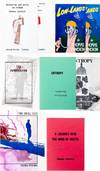first edition
2013 · v.p.
by Pynchon, Thomas
v.p., 2013. First Edition. fine/fine. 68 vols. All of the novels, a majority of his short stories (in one or more forms), some non-fiction articles, a group of secondary materials. See the full list below or on our website. Most are near fine or better. Thomas Pynchon is the archetypal postmodern figure whose literary trajectory reflects both remarkable consistency and subtle evolution. With his debut novel "V." (1963), Pynchon established an unmistakable voice characterized by labyrinthine narratives, information overload, and an obsessive preoccupation with systems of control. His early works—particularly "The Crying of Lot 49" (1966) and the monumental "Gravity's Rainbow" (1973)—introduced a constellation of recurring motifs that would define his oeuvre: entropy and thermodynamics as social metaphors, the interplay between technology and humanity, and the paranoid sensation that seemingly random events might reveal vast conspiracies lying just beyond comprehension. Pynchon's dense, encyclopedic approach reached its apotheosis in "Gravity's Rainbow," where his fragmented narrative structure effectively mirrored the disintegration of coherent meaning in post-WWII society.
The middle phase of Pynchon's career, beginning with "Vineland" (1990) and reaching maturity in "Mason & Dixon" (1997), represents not an abandonment but rather a refinement of his postmodern sensibilities. In "Mason & Dixon," Pynchon crafted what scholar Anna Greenspan termed a "tangled temporality," utilizing a fabricated 18th-century vernacular to create what might be considered a postmodern historical novel—one that acknowledges its own constructedness while paradoxically striving for historical authenticity. Particularly notable is Pynchon's masterful portrayal of the deep, complex friendship between the titular characters, whose complementary personalities and intellectual communion stand as one of literature's most compelling depictions of profound human connection. Through their relationship, Pynchon explores themes of companionship amid scientific pursuit and the search for meaning in an increasingly irrational world.
Pynchon's later works, including "Against the Day" (2006), "Inherent Vice" (2009), and "Bleeding Edge" (2013), demonstrate a continued evolution while maintaining his fundamental skepticism toward metanarratives and authoritative discourse. Throughout his career, certain thematic constants remain: the tension between order and chaos, the individual's search for meaning in increasingly complex technological systems, and America's unfulfilled promises and potential. His prose during this period continued to display not only remarkable erudition spanning mathematics, science, and obscure historical events, but also a carnivalesque quality that juxtaposed high academic discourse with low popular culture. Pynchon's enduring significance lies in his ability to utilize postmodern techniques not merely as stylistic flourishes but as essential tools for interrogating contemporary existence. His work consistently resists closure and easy interpretation, instead presenting reality as provisional, contingent, and subject to competing systems of knowledge—a literary stance that has influenced generations of writers grappling with the fragmented nature of contemporary experience.
V.
Philadelphia: J.B. Lippincott Company, 1963. Advance reading copy. Near fine with sunning to the spine and indention to the front wrapper of erased pencil notation. A ‘compliments of’ card from Lippincott laid in. Cloth box. Mead A1a note.
V.
Philadelphia: J.B. Lippincott Company, 1963. First edition, first printing. Fine with a book plate of Pynchon’s editor Ray A Roberts to the front pastedown (Ray A Roberts) in a dustjacket with the slightest wear to the corners, but still fine. Cloth box. Mead A1a.
The Crying of Lot 49
Philadelphia: J.B. Lippincott Company, 1963. First edition, first printing. Fine in a fine dustjacket. A publisher’s review slip laid in. Mead A2a.
Gravity’s Rainbow
New York: Viking, 1973. Uncorrected proof in tall blue wrappers. Pencil number to the front wrapper (as is the case with other uncorrected proofs), sunning to the spine and wrappers, book plate of Pynchon’s editor Ray A Roberts to the inside of the front wrapper, else near fine. A nice association copy of a scarce book. Mead A3a note 2.
Gravity’s Rainbow
New York: Viking, 1973. First edition, first printing. Fine in a fine dustjacket. Mead A3a. Cloth box.
Gravity’s Rainbow
New York: Viking, 1973. First edition, first printing of the first trade paperback (issued simultaneous to the cloth edition). A split to the front wrapper at the spine edge, lightly sunned spine, and some rubbing along the extremities. A book plate of Pynchon’s editor Ray A Roberts to the inside of the front wrapper. A nice association copy of an otherwise common book. Mead A3b.
Slow Learner
Boston: Little, Brown, 1984. First edition. Fine in a fine dustjacket. Mead A4a.
Slow Learner
London: Jonathan Cape, 1984. First British edition. Fine in a fine dustjacket. Mead A4b.
Slow Learner
Boston: Little, Brown, 1984. First trade paperback edition. Meade A4c.
Vineland
Boston: Little, Brown and Company, 1990. First edition. Fine in a fine dustjacket.
Mason & Dixon
New York: Henry Holt, 1997. Advanced reading copy. Fine in the printed wrappers.
Mason & Dixon
New York: Henry Holt, 1997. First edition. Fine in a fine printed acetate dustjacket. A card from an editor at Henry Holt is laid in.
Against the Day
New York: The Penguin Press, 2006. First edition. Fine in a fine dustjacket.
Inherent Vice
New York: The Penguin Press, 2009. First edition. Fine in a fine dustjacket.
Bleeding Edge
New York: The Penguin Press, 2013. First edition. Fine in a fine dustjacket.
“Low-Lands” in New World Writing #16
Philadelphia: J.B. Lippincott Company, 1960. First edition of the paperback, issued simultaneously with the hardbound. Pynchon’s first appearance in a book by a commercial publisher. Mead B9a.
“Entropy” in Kenyon Review 22, no. 2
Gambier, OH: Kenyon College, 1960. First edition of the story that introduced the recuring concept in Pynchon’s later works. Here he presents two parallel narratives that demonstrate both thermodynamic entropy (the tendency toward heat death and increasing disorder) and informational entropy (the degradation of meaningful communication). Spine toned with a few chips and the wrappers are lightly soiled, else internally clean. A scarce book. Mead B10a.
“Entropy” in Nelson Algren’s Own Book of Lonesome Monsters.
New York: Bernard Geis, 1962. First edition, paperback. Mead B10e. Very good.
“Under the Rose” in Noble Savage 3
New York: The World Publishing Company, 1961. First edition. Mead B12a. Very good.
“The Secret Integration” in The Saturday Evening Post
Philadelphia: Curtis, December 1964. Mead 13a. Very good.
“In Which Esther Gets a Nose Job” in Black Humor
New York: Bantam, 1965. First edition. Mead B14a. Very good.
“A Gift of Books” in Holiday Magazine 38, no. 6
Philadelphia: Curtis, December 1965. Mead B16. Very good.
“The Shrink Flips” in Cavalier 16, no. 153
Greenwich, Fawcett Publications, March 1966. Mead B18. Very good.
“A Journey into the Mind of Watts” in New York Times Magazine.
New York: New York Times, June 1966. Mead B19a. Very good.
“V. in Love” in The Single Voice
New York: Collier Books, 1969. Mead B22. Very good
A Complete Run of the Unauthorized First Separate Edition Short Stories
1) “Mortality and Mercy in Vienna.” London: Aloes Books, 1976. Wrappers. First printing. Near Fine. Mead C1a(2).
2) “Mortality and Mercy in Vienna.” London: Aloes Books, 1976. Wrappers. Second printing. Near Fine. Mead C1b.
3) “Low-Lands.” London: Aloes Books, 1978. Wrappers. First printing. 1500 copies. Near Fine. Mead C2.
4) “Low-Lands.” London: Aloes Books, 1978. Wrappers. Stated second printing. Near Fine. Not in Mead.
5) “The Secret Integration.” London: Aloes Books, 1980. Wrappers. First printing. 2500 copies. Near Fine. Mead C3.
6) “Entropy.” London: Troy Town, 1981. Green wrappers. First printing. Near Fine. Mead C4a.
7) “Entropy.” London: Troy Town, 1981. White photographic wrappers. Second printing. Near Fine. Mead C4b.
8) “The Small Rain.” London: Aloes Books, 1982. Wrappers. Near Fine. Mead C5.
9) “A Journey into the Mind of Watts.” London: Mouldwarp, 1983. Wrappers. Near Fine. Mead C6.
A Complete Run of “Pynchon Notes” #1-57
Various: 1979-2009. Edited by Krafft and Tölölyan. 34 vols. Wrappers. A journal reprinting academic papers, book announcements and reviews related to Pynchon and his works. The early issues were printed by the editors at Wesleyan in very small numbers. Scarce complete. A near fine set.
“Presentation to Thomas Pynchon of the Howells Medal for Fiction of the Academy” by William Styron in Proceedings of the American Academy of Arts and Letters and the National Institute of Arts and Letters, second series, no. 26 (1976): 43-46. (Inventory #: 1161)
The middle phase of Pynchon's career, beginning with "Vineland" (1990) and reaching maturity in "Mason & Dixon" (1997), represents not an abandonment but rather a refinement of his postmodern sensibilities. In "Mason & Dixon," Pynchon crafted what scholar Anna Greenspan termed a "tangled temporality," utilizing a fabricated 18th-century vernacular to create what might be considered a postmodern historical novel—one that acknowledges its own constructedness while paradoxically striving for historical authenticity. Particularly notable is Pynchon's masterful portrayal of the deep, complex friendship between the titular characters, whose complementary personalities and intellectual communion stand as one of literature's most compelling depictions of profound human connection. Through their relationship, Pynchon explores themes of companionship amid scientific pursuit and the search for meaning in an increasingly irrational world.
Pynchon's later works, including "Against the Day" (2006), "Inherent Vice" (2009), and "Bleeding Edge" (2013), demonstrate a continued evolution while maintaining his fundamental skepticism toward metanarratives and authoritative discourse. Throughout his career, certain thematic constants remain: the tension between order and chaos, the individual's search for meaning in increasingly complex technological systems, and America's unfulfilled promises and potential. His prose during this period continued to display not only remarkable erudition spanning mathematics, science, and obscure historical events, but also a carnivalesque quality that juxtaposed high academic discourse with low popular culture. Pynchon's enduring significance lies in his ability to utilize postmodern techniques not merely as stylistic flourishes but as essential tools for interrogating contemporary existence. His work consistently resists closure and easy interpretation, instead presenting reality as provisional, contingent, and subject to competing systems of knowledge—a literary stance that has influenced generations of writers grappling with the fragmented nature of contemporary experience.
V.
Philadelphia: J.B. Lippincott Company, 1963. Advance reading copy. Near fine with sunning to the spine and indention to the front wrapper of erased pencil notation. A ‘compliments of’ card from Lippincott laid in. Cloth box. Mead A1a note.
V.
Philadelphia: J.B. Lippincott Company, 1963. First edition, first printing. Fine with a book plate of Pynchon’s editor Ray A Roberts to the front pastedown (Ray A Roberts) in a dustjacket with the slightest wear to the corners, but still fine. Cloth box. Mead A1a.
The Crying of Lot 49
Philadelphia: J.B. Lippincott Company, 1963. First edition, first printing. Fine in a fine dustjacket. A publisher’s review slip laid in. Mead A2a.
Gravity’s Rainbow
New York: Viking, 1973. Uncorrected proof in tall blue wrappers. Pencil number to the front wrapper (as is the case with other uncorrected proofs), sunning to the spine and wrappers, book plate of Pynchon’s editor Ray A Roberts to the inside of the front wrapper, else near fine. A nice association copy of a scarce book. Mead A3a note 2.
Gravity’s Rainbow
New York: Viking, 1973. First edition, first printing. Fine in a fine dustjacket. Mead A3a. Cloth box.
Gravity’s Rainbow
New York: Viking, 1973. First edition, first printing of the first trade paperback (issued simultaneous to the cloth edition). A split to the front wrapper at the spine edge, lightly sunned spine, and some rubbing along the extremities. A book plate of Pynchon’s editor Ray A Roberts to the inside of the front wrapper. A nice association copy of an otherwise common book. Mead A3b.
Slow Learner
Boston: Little, Brown, 1984. First edition. Fine in a fine dustjacket. Mead A4a.
Slow Learner
London: Jonathan Cape, 1984. First British edition. Fine in a fine dustjacket. Mead A4b.
Slow Learner
Boston: Little, Brown, 1984. First trade paperback edition. Meade A4c.
Vineland
Boston: Little, Brown and Company, 1990. First edition. Fine in a fine dustjacket.
Mason & Dixon
New York: Henry Holt, 1997. Advanced reading copy. Fine in the printed wrappers.
Mason & Dixon
New York: Henry Holt, 1997. First edition. Fine in a fine printed acetate dustjacket. A card from an editor at Henry Holt is laid in.
Against the Day
New York: The Penguin Press, 2006. First edition. Fine in a fine dustjacket.
Inherent Vice
New York: The Penguin Press, 2009. First edition. Fine in a fine dustjacket.
Bleeding Edge
New York: The Penguin Press, 2013. First edition. Fine in a fine dustjacket.
“Low-Lands” in New World Writing #16
Philadelphia: J.B. Lippincott Company, 1960. First edition of the paperback, issued simultaneously with the hardbound. Pynchon’s first appearance in a book by a commercial publisher. Mead B9a.
“Entropy” in Kenyon Review 22, no. 2
Gambier, OH: Kenyon College, 1960. First edition of the story that introduced the recuring concept in Pynchon’s later works. Here he presents two parallel narratives that demonstrate both thermodynamic entropy (the tendency toward heat death and increasing disorder) and informational entropy (the degradation of meaningful communication). Spine toned with a few chips and the wrappers are lightly soiled, else internally clean. A scarce book. Mead B10a.
“Entropy” in Nelson Algren’s Own Book of Lonesome Monsters.
New York: Bernard Geis, 1962. First edition, paperback. Mead B10e. Very good.
“Under the Rose” in Noble Savage 3
New York: The World Publishing Company, 1961. First edition. Mead B12a. Very good.
“The Secret Integration” in The Saturday Evening Post
Philadelphia: Curtis, December 1964. Mead 13a. Very good.
“In Which Esther Gets a Nose Job” in Black Humor
New York: Bantam, 1965. First edition. Mead B14a. Very good.
“A Gift of Books” in Holiday Magazine 38, no. 6
Philadelphia: Curtis, December 1965. Mead B16. Very good.
“The Shrink Flips” in Cavalier 16, no. 153
Greenwich, Fawcett Publications, March 1966. Mead B18. Very good.
“A Journey into the Mind of Watts” in New York Times Magazine.
New York: New York Times, June 1966. Mead B19a. Very good.
“V. in Love” in The Single Voice
New York: Collier Books, 1969. Mead B22. Very good
A Complete Run of the Unauthorized First Separate Edition Short Stories
1) “Mortality and Mercy in Vienna.” London: Aloes Books, 1976. Wrappers. First printing. Near Fine. Mead C1a(2).
2) “Mortality and Mercy in Vienna.” London: Aloes Books, 1976. Wrappers. Second printing. Near Fine. Mead C1b.
3) “Low-Lands.” London: Aloes Books, 1978. Wrappers. First printing. 1500 copies. Near Fine. Mead C2.
4) “Low-Lands.” London: Aloes Books, 1978. Wrappers. Stated second printing. Near Fine. Not in Mead.
5) “The Secret Integration.” London: Aloes Books, 1980. Wrappers. First printing. 2500 copies. Near Fine. Mead C3.
6) “Entropy.” London: Troy Town, 1981. Green wrappers. First printing. Near Fine. Mead C4a.
7) “Entropy.” London: Troy Town, 1981. White photographic wrappers. Second printing. Near Fine. Mead C4b.
8) “The Small Rain.” London: Aloes Books, 1982. Wrappers. Near Fine. Mead C5.
9) “A Journey into the Mind of Watts.” London: Mouldwarp, 1983. Wrappers. Near Fine. Mead C6.
A Complete Run of “Pynchon Notes” #1-57
Various: 1979-2009. Edited by Krafft and Tölölyan. 34 vols. Wrappers. A journal reprinting academic papers, book announcements and reviews related to Pynchon and his works. The early issues were printed by the editors at Wesleyan in very small numbers. Scarce complete. A near fine set.
“Presentation to Thomas Pynchon of the Howells Medal for Fiction of the Academy” by William Styron in Proceedings of the American Academy of Arts and Letters and the National Institute of Arts and Letters, second series, no. 26 (1976): 43-46. (Inventory #: 1161)
